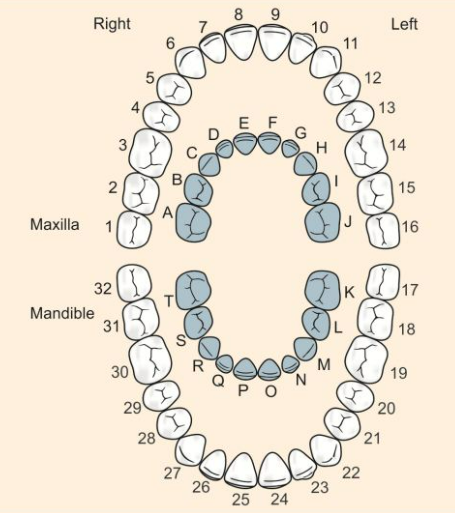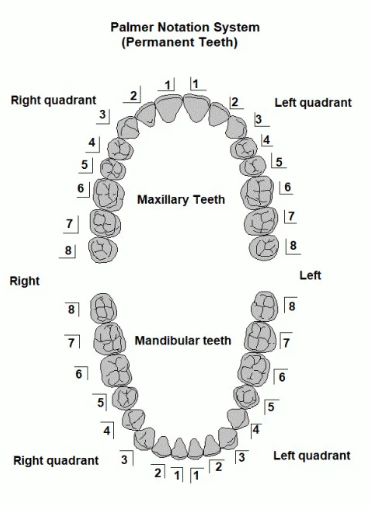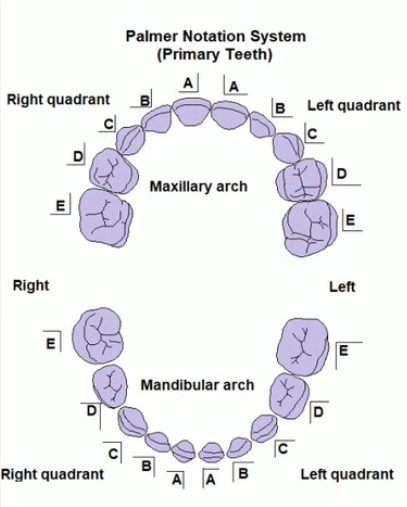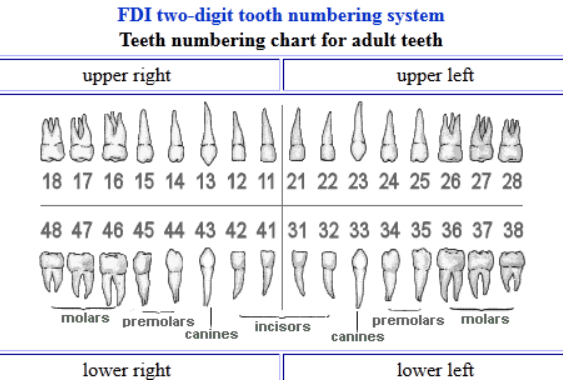Welcome to our comprehensive guide on dental anatomy and the numbering system used by dentists. Have you ever wondered why dentists refer to specific teeth using numbers? In this article, we aim to demystify the dental numbering system and provide you with a clear understanding of how dentists identify each individual tooth.
Whether you’re a dental professional or simply curious about dental health, knowing the numbering system can be useful for communication and understanding dental treatments. By referring to teeth with a numbering system, dentists can quickly and accurately identify and discuss common dental issues.
Throughout this guide, we will explain the different dental numbering systems used worldwide, including the Universal Numbering System, Palmer Notation Method, and the FDI World Dental Federation system.
By the end of this article, you will be able to confidently communicate and locate specific teeth within the mouth. Which will help you better communicate with your dental team and patients. Let’s dive in and demystify Dental tooth numbers together!
Why dentists number teeth
Dental anatomy can be complex, with multiple teeth in the mouth, each serving a specific function. To ensure effective communication and accurate record-keeping, dentists use a numbering system to identify and refer to specific teeth. This system allows dental professionals to discuss specific teeth without confusion, regardless of the patient’s age or the language they speak. By understanding the dental numbering system, patients can also communicate better with their dentists, making discussions about dental treatments more efficient and precise.
The numbering system used by dentists
There are several dental numbering systems used worldwide, each with its unique approach. The most commonly used systems are the Universal Numbering System, Palmer Notation Method, and the FDI World Dental Federation system. Let’s take a closer look at each of these systems.
Understanding the Universal Numbering System

The Universal Numbering System is widely used in the United States and many other countries. Under this system, each tooth is assigned a number, starting from the upper right third molar (tooth number 1) and moving clockwise around the mouth, ending with the lower right third molar (tooth number 32).
The Palmer Notation System

The Palmer notation method consists of a symbol (┘└ ┐┌) which designates the quadrant of the tooth and a number which indicates the position from the midline. Adult teeth are numbered 1 to 8, with primary or baby teeth indicated by letters A through E. This method it most often used by Orthodontists.

The FDI World Dental Federation Numbering System
The FDI World Dental Federation system is used internationally and provides a standardized approach to dental numbering. This system uses two-digit numbers to identify teeth, with the first digit representing the quadrant and the second digit indicating the tooth’s position within that quadrant. The mouth is divided into four quadrants, starting with the upper right (quadrant 1) and moving counterclockwise to the upper left (quadrant 2), lower left (quadrant 3), and lower right (quadrant 4) the second digit follows the same guidelines at the Palmer Notation Method. Starting at the midline and working to the back of the mouth.. For example, the upper right first molar would be tooth number 16 while the lower left central incisor would be tooth number 31

Importance of dental numbering for patient communication and record-keeping
There are several common misconceptions about dental numbering that we will address in this section. One common misconception is that the numbering of teeth is based on their position in the mouth. In reality, the tooth number does not change if the tooth shifts into an open space in the mouth. no matter the system you are using.
Another misconception is that the numbering of teeth is the same for everyone. While the FDI World Dental Federation numbering system is widely used, there may be slight variations in the numbering systems used in different regions or dental practices. It’s important to understand the specific numbering system used by your dentist to ensure accurate communication.
Lastly, some people may believe that the numbering of teeth is not important or relevant to their dental health. However, understanding the numbering system can be beneficial for patients. It allows individuals to better communicate with their dentist about specific teeth or dental issues, making it easier for the dentist to provide appropriate treatment and guidance.
Conclusion
The dental numbering system plays a crucial role in patient communication and record-keeping. By using a standardized numbering system, dentists can efficiently communicate with each other and with patients about specific teeth and dental conditions. This facilitates accurate diagnosis, treatment planning, and discussion of treatment options. This information is invaluable for monitoring the progress of dental treatments, identifying trends, and making informed decisions about future dental care. For the administration staff, understanding the different dental numbering systems will help you understand and effectively answer any questions your patients may have while delivering their financial arrangements. Which in turn could create a higher case acceptance rate with in your office, leading to better overall oral care outcomes.
